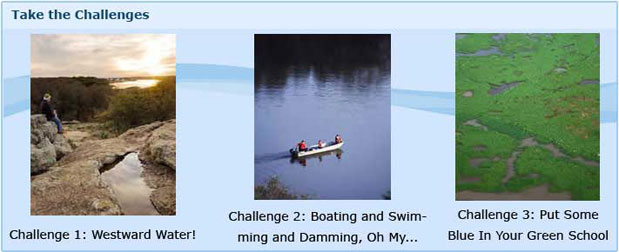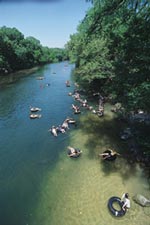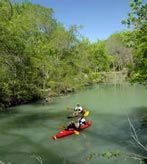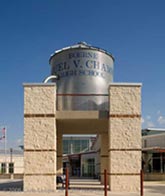Legacy Cycle C: People Need Water
People need clean drinking water. They also depend on water to support agriculture, manufacturing, and energy production. People affect water quality, availability, and distribution by creating engineered structures such as canals, dams, and levees, and by polluting streams and aquifers with urban runoff, sewage, and waste from agriculture and industrial processes. Once contaminated, water quality is difficult to restore. In many places, both surface water and groundwater supplies are being withdrawn faster than they are being replenished. Earth scientists and engineers find and manage water resources. Engineers develop new technologies for water resource development to help reduce the impact of pollution.

Challenge 1: Westward H20!

Imagine it is 1852 and you are the editor of the newspaper, the Zeitung, in the recently established community of New Braunfels, Texas. In order to attract new settlers who will set up stores, mills, factories, processing plants, and artisanal and craft shops to serve the growing population and economy of the new state of Texas (Texas became a state in the United States of America in 1845), you plan a full two-page spread to persuade more settlers to come to New Braunfels. Your advertisement highlights the abundant artesian springs and the importance of the Guadalupe and Comal rivers as major sources of water power and as shipping routes from central Texas to the Gulf of Mexico.
Challenge 2: Boating and Swimming and Damming, Oh My…

You have been hired by the Texas Water Development Board (TWDB) and the Lower Colorado River Authority (LCRA) to head a team of researchers to analyze the positive and negative impacts of the Highland Lakes System, and to develop a set of recommendations regarding future conservation and development. You will need to track storage, usage, and replenishment rates for the past 25 years; investigate secondary impacts related to agriculture and tourism/recreation; and consider how the uncertainties associated with climate change and population growth affect water planning. You will present your report to a joint meeting of the TWDB and the LCRA.
Challenge 3: Put Some Blue In Your Green School

Are you interested in becoming a champion of conservation? In this challenge, you can serve your school and community by becoming a leader in water resource conservation. You recently visited the newly constructed 2009, Texas Environmental Excellence Award winning school, Samuel V. Champion High School in Boerne, Texas, and have been inspired to Put Some Blue In Your Green School by performing a school water audit as a service learning project.
Target Audience: High school, especially students taking Aquatics, Environmental Systems, Earth and Space Science, and Advanced Placement Environmental Science.